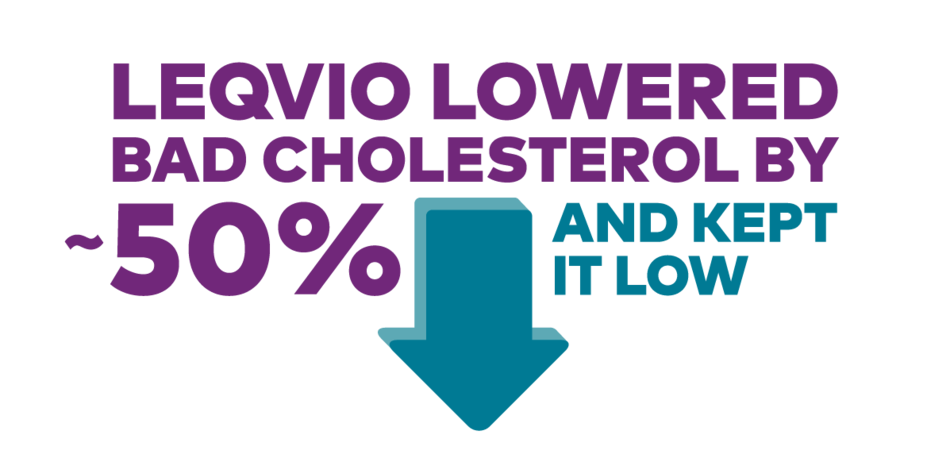
Results & Safety
Photo depicts actors.
Adding LEQVIO® to a statin is proven to lower bad cholesterol (LDL-C) and keep it low
A clinical study enrolled people with known heart disease who were on a statin and needed more help to lower their bad cholesterol. People who added LEQVIO to a statin lowered bad cholesterol by ~50% and kept it low for each 6-month dosing interval vs those who added placebo (a substance without medication).
Clinical study information
These results are based on a study in which 1561 patients with ASCVD were on a maximally tolerated statin with or without another bad-cholesterol–lowering treatment—in addition to LEQVIO (781 patients) or a placebo (780 patients).
Individual results may vary.
LEQVIO helped people reach their goal
At 17 months, when added to a statin, LEQVIO helped 8 out of 10 people with heart disease get their bad cholesterol below 70 mg/dL, the AHA recommended number, compared to 2 out of 10 people who added placebo.

"My [bad] cholesterol went down. It was amazing."
- Cindy M., LEQVIO patient compensated for her time
Individual results may vary.
What are the side effects of LEQVIO?
In clinical trials, the majority of side effects were mild to moderate. This is not a complete list of all the potential side effects. Consult with your doctor to see if LEQVIO is right for you.
Side effect | People taking LEQVIO | People taking a placebo* |
Injection site reaction (including pain, redness, and rash) | 8% | 2% |
Joint pain | 5% | 4% |
Chest cold | 4% | 3% |
Side effects leading to discontinuing treatment | 2.5% | 1.9% |
*A substance that doesn't contain any medication.
In 3 clinical studies, 1833 people were treated with LEQVIO and 1822 people were treated with placebo.
Is LEQVIO right for you?
If you’ve struggled with lowering bad cholesterol despite eating healthy and exercising, LEQVIO may be able to help you lower it and keep it low.
Of course, you’ll need to talk to your doctor to make the final decision. To learn more about LEQVIO, click the button for a helpful brochure.
Learn more about LEQVIO's dosing: 2 doses a year after 2 initial doses
